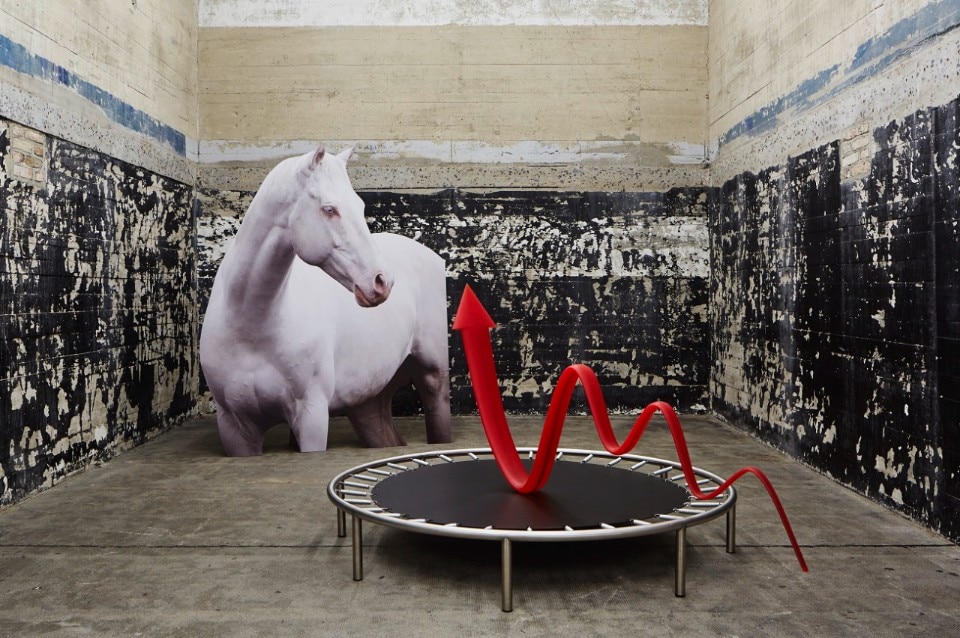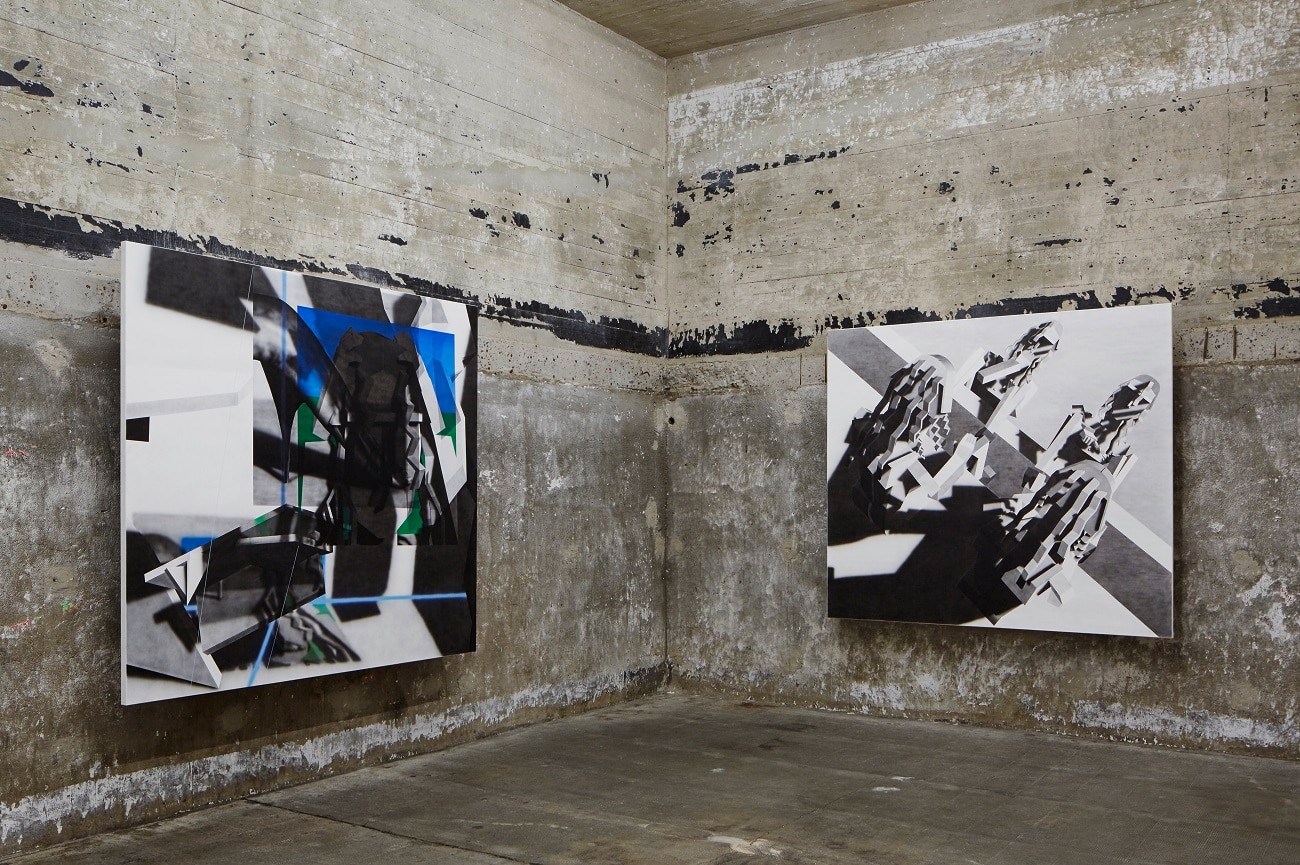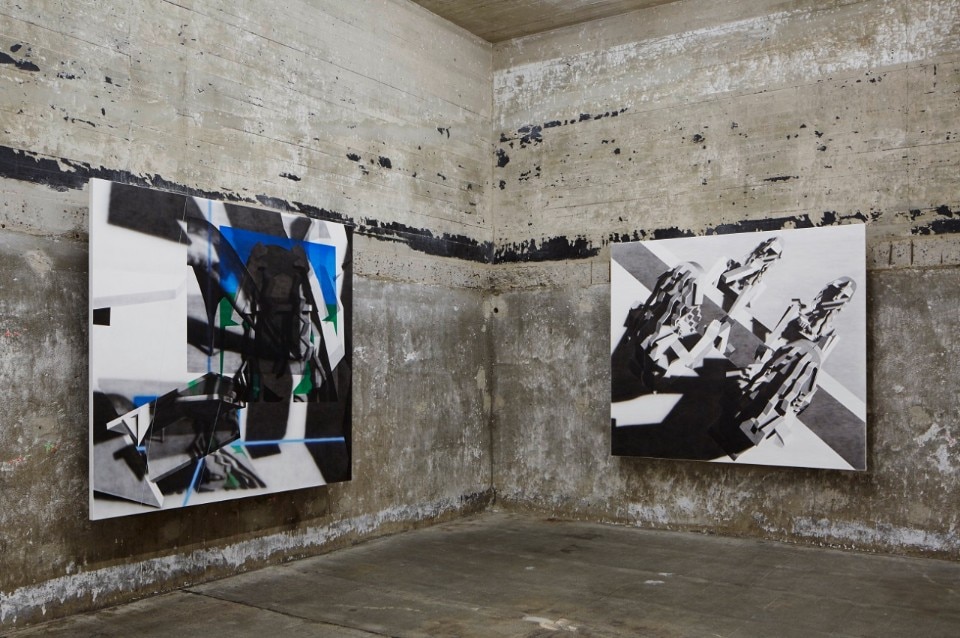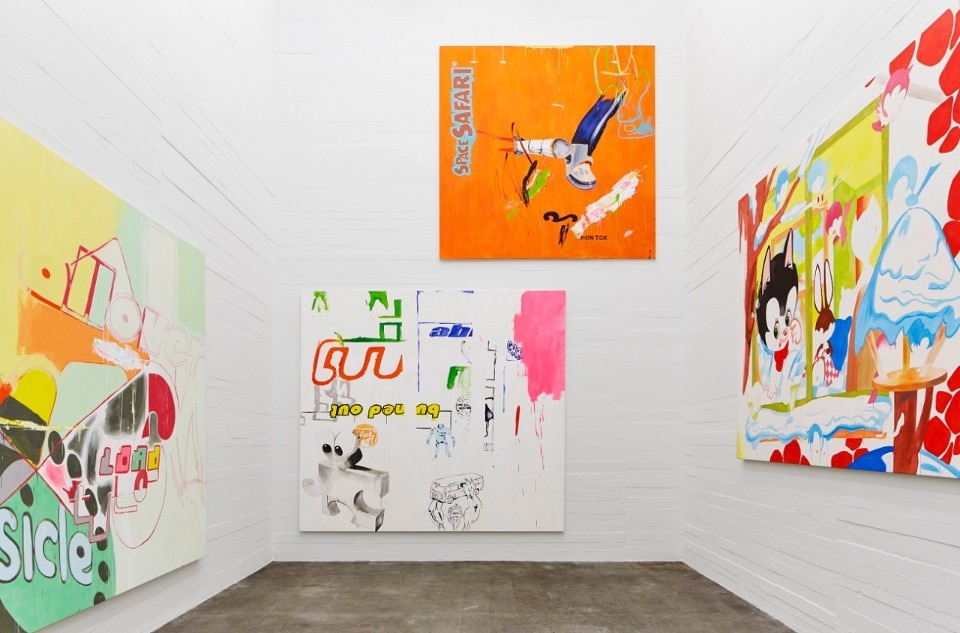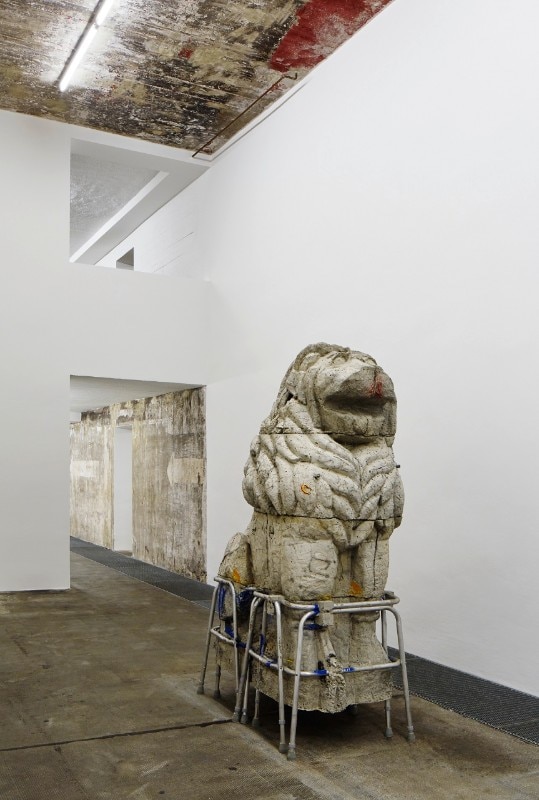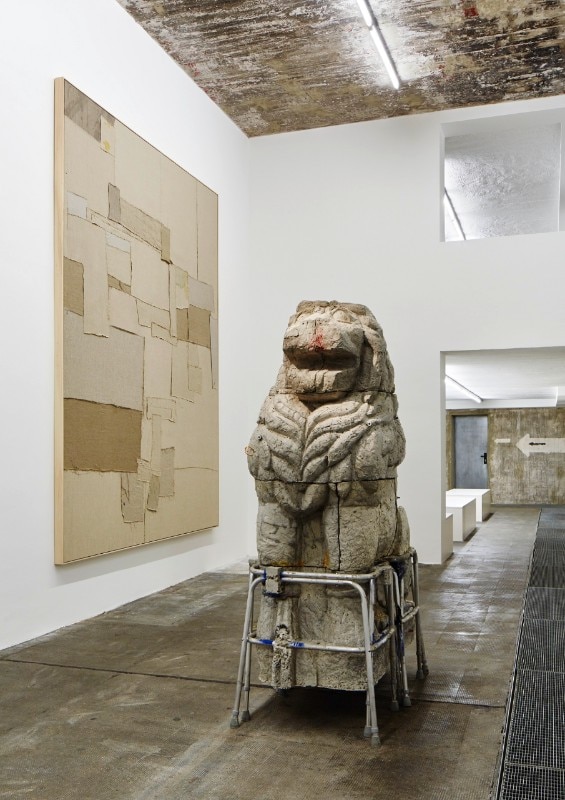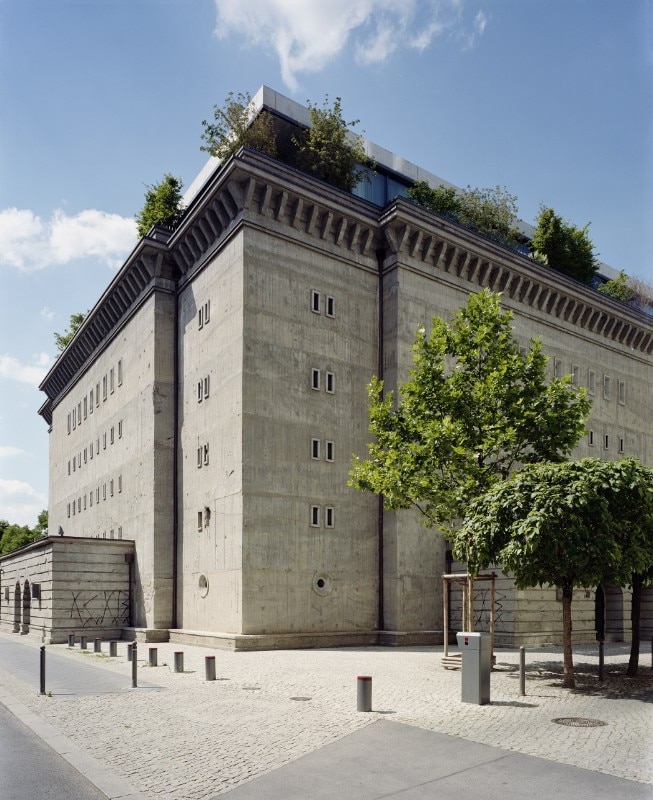Located in Berlin-Mitte’s neighbourhood, in Reinhardtstrasse, there is an austere monumental bunker raising from the asphalt. In 1942, was constructed as an air-raid shelter for the civilian population, built by forced labourers. Today, in the bunker, is located the Boros Collection, a private collection of contemporary art. It comprises groups of works by international artists dating from 1990 to the present. Different facets of the collection are on public display in a converted bunker, with 3,000 square meters exhibition space.
The new Boros Collection program presents newly purchased and site specific works in combination with works from the 1990s and 2000. The new presentation opened to the public via guided tours, during the last Berlin Art Weekend, indeed Due to safety regulations, the Bunker can only be visited in small groups accompanied by one of our in-house guides. The tours take place from Thursday to Sunday. The tours start every half hour in English and German. We interviewed Sammlung Boros patron, Christian Boros and the collection curator Juliet Kothe.
In contemporary times, could you please list three values, missions or visions, a private collector should always have in his mind, in order to let grow a fulfilling relationship between its collection and the referring publics?
Mr. Christian Boros: We run a collection, which is neither a museum nor a private museum. I see us as a private space that can be visited by appointment, showing fragments of our collection, which is solely contemporary. Each presentation contains mostly works that have just been produced. The core of the visit is the art mediation – every visitor participates in a 90 minute guided tour. There is no exception: every visit somehow is also educational. Our team of art mediators is extraordinary and international: artists, critics, art historians, product designers – a huge variety of perspectives onto art and contemporary culture. They are the heart of the collection and the bridge to the public.
Is there an art collection or an art collector, in art history, inspiring your own cultural and aesthetical path?
C.B.: A huge role-model was the private collection of Erika Hoffmann, the first private space to open to the public in Berlin. My wife Karen and I admired especially the art mediation she offered along with the visit of her exhibitions. Contemporary art becomes understandable and accessible for any visitor when you not only walk past the works and look at them, but when it is talked about. It was clear from the beginning that we wanted to offer these communicational bridges towards an understanding of art through art mediators in our collection too.
Talking about the bunker architecture hosting Sammlung Boros, which kind of influences and which kind of meanings is instilling into your collection? Is this peculiar architecture shaping your collector practices and choices?
C.B.: From the beginning Karen and I looked unexceptional for places with historical references. We definitely did not want a new construction but a place that gains a new meaning, a new function while being transformed into a private collection space. Despite from that we were completely open to any ideas. We actually looked at a lot of different objects – around the year 2000 there were still a lot of properties of that sort on the market – but the moment we found out about the bunker it was clear we found the right building. This building, been on the market for more than two years, was screaming for help.
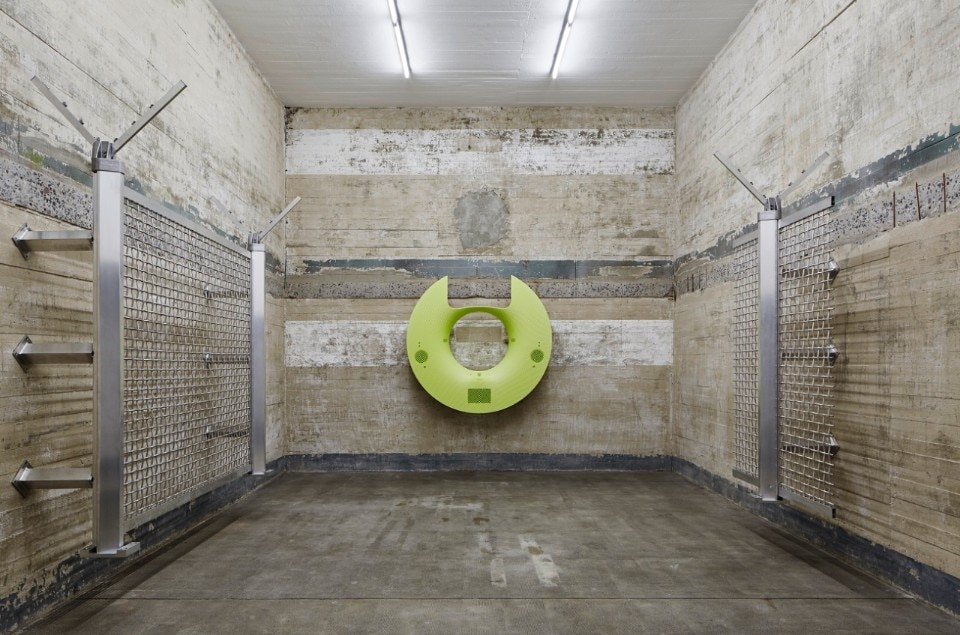
What is your current role in Sammlung-Boros? Are you also responsible for acquisitions and selections of works of art?
Juliet Kothe: Since February 2017, I have been the director of the Boros Foundation. I have full responsibility for the management of our private exhibition space in a former bunker and the complete administration behind it. My work covers all aspects of running a private museum: from the mediation program, human resources, public relations, catalog production, representation tasks, international loans, archiving, communication and special events. We only change the presentation of the works exhibited every four years and, like everything else, our artists are deeply involved in this process. In fact, we don’t say that our exhibitions are “curated” – it is more a collaborative and organic development between all stakeholders that leads to the outcome of the exhibition. Karen and Christian continue to be very interested in contemporary behaviours – so the new positions of very young and upcoming artists are constantly nurtured by existing positions.
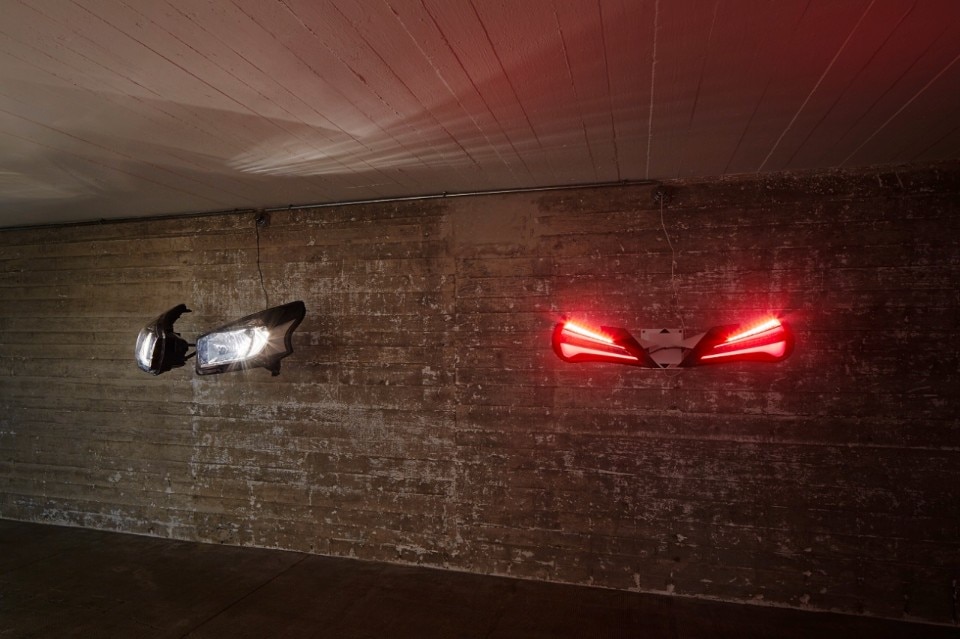
On your opinion Sammlung Boros bunker’s architecture and history which kind of perceptive insights could induce into visitors? And into the exhibited artworks?
J.K: The history and the bunkers architecture is very specific. You can’t separate the art from the space in which it is shown. We always give an introduction into the history of the house before we start mediating and explaining the exhibited works since we see this as an educational responsibility. The bunker has witnessed three different political regimes. The former air raid shelter was built during the Second World War as the result of an immediate order by Adolf Hiltler (“Führersofortbefehl). Albert Speer, the architect under Adolf Hitler who was responsible to translate the ideology of the Nazis into a certain architectural language was creating models of bunker (Typenbunker). Our particular bunker was called M1200 – M stands for Menschen (people) and 1200 was the number of people who were supposed to find shelter. It was built by Karl Bonatz, an architect who considered Albert Speers plans and executed them.
The architecture is very specific: it connects form with function. It carries a lot of architectural elements from the renaissance: the opposing stairs cases that go back to Leonardo Da Vinci, the identical and geometrical floor plan on each of the 5 levels, which makes me think of Palladio and his Villa Rotonda as well as the outside which contains a lot of elements of a renaissance palace. Anyhow all these aspects had a clear function: they made it easier to orientate yourself insight and the staircases guaranteed that people could enter and exit the building very quickly. There were more than 4000 people inside during the bombings, mostly children, woman, old people – the men were all gone to war. Albert Speer included the bunker into the concept of “Germania” – the dreamed of capital of the Third Reich.
The second period was when the bunker was used as a storage for fresh fruits during the GDR times. Due to the two meters thick concrete walls and the three meters thick ceiling the outside temperature enters inside very slowly which, it works like a huge refrigerator with no natural light – perfect conditions for bananas and oranges that were send over from the political brother state Cuba twice a year. Of course the luxury goods – in the GDR there was a general lack of everything – were not given to the ordinary public but to the so called “Bonzen”, the political elites of the GDR. People called the building Banana bunker.
When the wall fell down there was pure anarchy in Berlin and Techno music was on its rise. People entered buildings and just started to throw the wildest parties infused with new synthetic drugs. It must have been insane. People put candles in the corner (like in the war) to check the oxygen level – it was basically raining from the ceilings due to the sweat, there were no proper toilets, 30 DJs at the same time playing, mostly Gabber – very monotone electronic music. It became the “hardest club in the whole world.” It was the time when techno culture melt with homosexual and fetish elements for the first time so for a lot of people “The Bunker” is still the inspiration giver for iconic clubs like the Berghain or Kitkat.
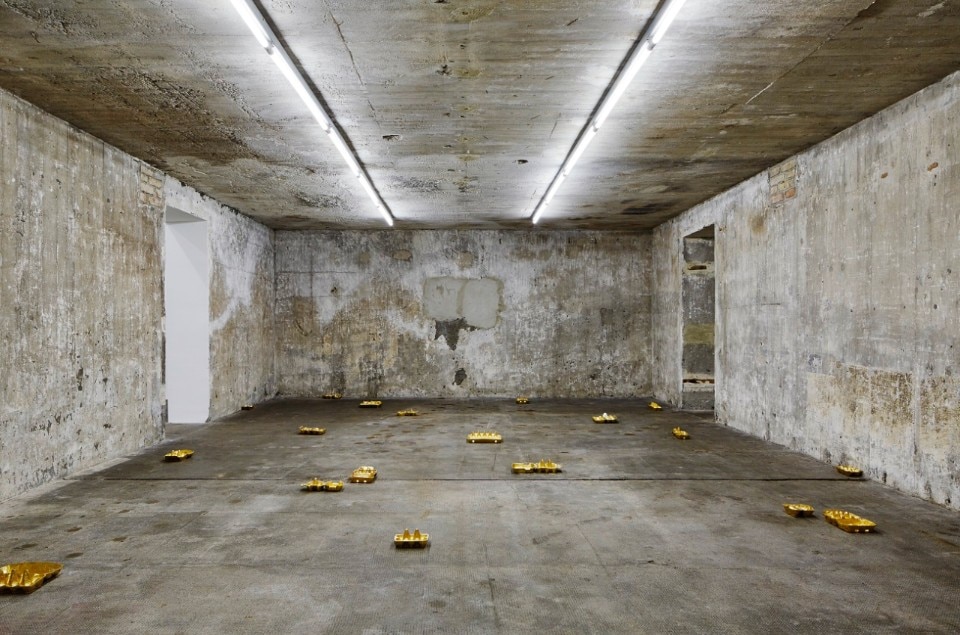
Among Avery Singer, Katja Novitskova, Yngve Holen but also He Xiangyu and Arbeiten von Michel Majerus’s works, which kind of thematic and conceptual highlights could be revised at the actual Sammulng-Boros displacement?
J.K: I like how a lot of the works emphasise on the idea how “the image” is entering new means of distribution. For Guan Xiao or Katja the Internet is the source of a lot of their works – found footage is used to create their installations, that we again take pictures of and maybe upload on Instagram were someone else shares is. The circulation of the image is uncontrollable. Is that a good thing or a bad? It makes me scared that everything is visually accessible within seconds. I just realized how less exiting it is to see an exhibition or the Venice Biennale when you have seen half of it on various Instagram accounts.
On your opinion, at the moment, which is the artist representing at best Sammlung Boros and why?
J.K: Its them all together. The show clearly shows how means of contemporary art production change, how certain trends are dominating the artistic production – like found footage or certain techniques - 3D printing for example – or materials like epoxy.
Could you please reveal Sammlung Boros further programs?
J.K: We just started a mediation program for children starting at the age of 5 until 12. Especially children can learn a lot concerning the history of the bunker and the historical responsibility that we all carry but also through the narratives of the artists that reveal the conservatism of our believe system. Art is free, art is critical, art is anti-establishment. Art makes you critically reflecting and thinking – what is more important than it, in terms to maintain a liberal and human perspective?
- Venue:
- Sammlung Boros
- Curated by:
- Juliet Kothe
- Address:
- Reinhardtstr. 20 10117 Berlin-Mitte, Germany


